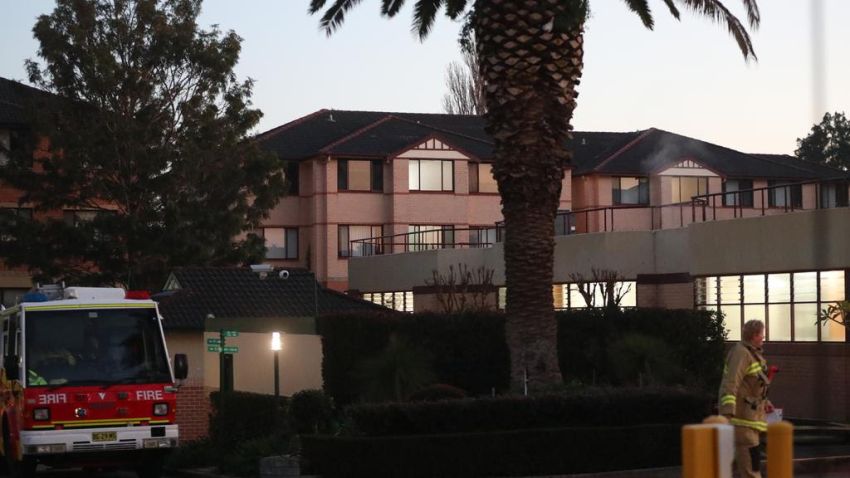
At about 3.30am on July 24, a resident in a three-storey block of units in the inner-west suburb of Ashfield called Emergency Services after being awakened by ground movements and hearing cracking and popping sounds. Within minutes Fire and Rescue NSW arrived to find “indications that a building on Knocklayde Street had started to show cracking and internal doors were stuck shut due to building distortion”.
Ten residents from six apartments in the Green Trees Estate were evacuated to a local community centre and specialist firefighters were called to set up laser measuring devices to monitor building movement. Later that day, the residents were allowed to return to their apartments.
While structural engineers who investigated the cracks have yet to present their report, the same day NSW Minister for Transport and Roads Andrew Constance rushed to dismiss any connection between the WestConnex tunnelling and cracking. He blamed the incident on a leaky pipe.
However, veteran campaigner Andrew Chuter has unearthed evidence that WestConnex has knowingly acted against the approvals’ conditions. He found two 2016 reports that identified two buildings in the Green Trees Estate being at risk of ground settlement greater than 20 millimetres — the settlement criteria set down for buildings of three storeys and above in the government’s Conditions of Approval (CoA) for the M4 East tunnel.
Chuter told Green Left that a Pre-Construction Compliance Report, dated May 10, 2016, explained that modelling based on WestConnex’s geotechnical surveys identified the risk.
A subsequent compliance report, published just before tunnelling was scheduled to begin in July 2016, noted that the CoA required WestConnex to “identify and implement mitigation measures such as appropriate support and stabilisation structures in consultation with the relevant land and/or infrastructure owners prior to the commencement of construction to ensure where possible that underground services, infrastructure and adjacent buildings will not experience settlements exceeding the criteria”.
Chuter pointed out that the WestConnex report said “no action needed to be taken because ‘the settlement will be predominantly uniform rather than damage-inducing differential settlement’. In other words, as the ground was expected to drop evenly, that should be less damaging than if it dropped unevenly.
“This was a risky call and the public deserves to know if it was lawful under the CoA.
“Even if the CoA is so weak to allow such calls, the public deserves to be informed of the risk and the minister responsible should not have made his premature exoneration of WestConnex for the cracking in the Ashfield units.”
Chuter added that the reports also listed two homes in the neighbouring suburb of Croydon, as having higher settlement risks than allowed, without mitigation under the CoA, but dismissed any likely cracking as “minor” and easily filled.
Transurban, which owns or operates most road tollways around Australia, owns 51% of WestConnex along with Australian Super, Canada Pension Plan Investment Board and the Abu Dhabi Investment Authority.
The NSW government is preparing to privatise the remaining 49% to fund the next round of road tunnelling, and Transurban is expected to be the lead bidder.
The rise in people working from home and the recession that has followed the COVID-19 pandemic have reduced tollway traffic by about 40%, but WestConnex has sought to make up income by raising tolls and bringing forward the opening of its M8 tunnel.
Chuter and other campaigners against WestConnex are concerned that a push by the NSW government to speed up WestConnex tunnelling and to move on to the equally controversial second Sydney Harbour crossing tunnel project may increase the likelihood of dangerous mistakes and shortcuts.
Residents in the suburb of Annandale were shocked when they were given just six days notice of experimental blasting under their homes on July 27. WestConnex says that “controlled blasting” could speed up tunnelling through harder rock.
Inner West Green Councillor and Annandale resident Marghanita da Cruz has called for the Environment Protection Authority to make the report on the test blasts public.
Wendy Bacon, another campaigner and a respected investigative journalist, reported in the July 15 City Hub that air pollution in the WestConnex M8 tunnel has exceeded limits six time since it opened in early July. Five of these involved WestConnex’s controversial unfiltered ventilation stacks.
The high readings raised concerns about the reliability of the ventilation system and the amount of construction dust that has been left lying in and around the tunnel after its rushed opening.
Making Transurban accountable for the air pollution from its tollways is another major issue. Bacon explained that the reports on air pollution were not easy for the public to access or understand.